The No BS Guide to Building a Portfolio Career: How I Transitioned and You Can Too
Introduction.
In this newsletter I’m going to be talking about how you can successfully build a portfolio career. This is the new way to create a career, as opposed to pursuing a career. It is becoming even more important to do this because as you know, the labour markets are changing.
The term career portfolio was originally coined by philosopher and organizational behaviour expert Charles Handy in the 1990s (Castrillo, C. (2021) Why you should build a career portfolio not a career path, Harvard Business Review).
This is important to you, because as an ambitious professional, you want to make sure that you survive and even thrive. This newsletter may give you the boost you need in order to take the right steps to exist in this new economy.

As I have highlighted in a previous post, the portfolio career is becoming even more important because of:
- The rise in AI and automation
- Toxic work cultures and poor leadership
- The Great Resignation
- An increasing gig economy
- The cost of living crisis
- A need for organisations to spend less overtime with contractors
Failing to lean into the creation of your portfolio career may result in disappointment, lack of money, and lack of purpose. Hopefully at the end of this newsletter post, you will be able to see the importance of why you need to get started now.
Let’s get started!
The future is here…
The Henley Business School predicts that 50% of all professionals will have a portfolio career. Whether you realise this or not you already have a portfolio career; it’s a case of perspective.
In a previous post, I spoke about the different types of portfolio careerists that exist. You can check out that post here.
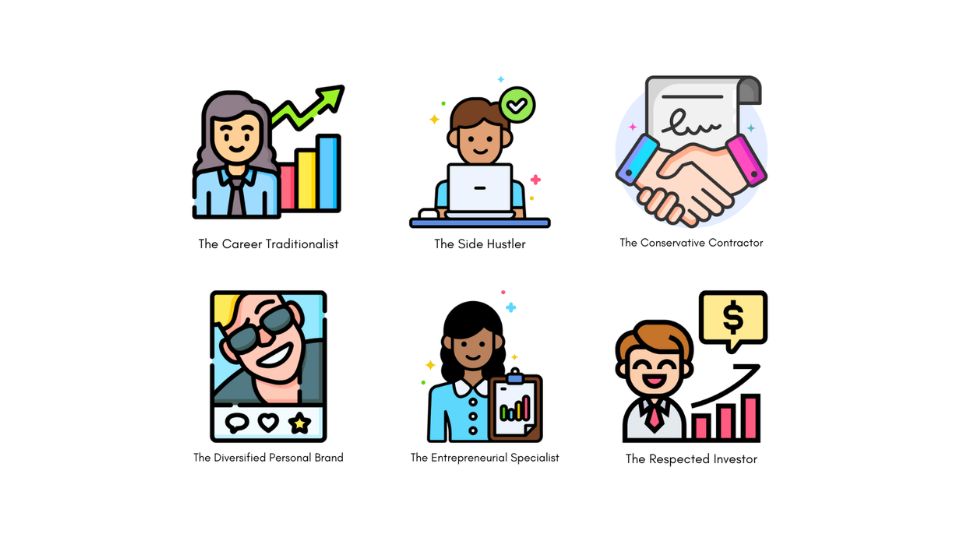
So, what are we going to go through in this newsletter? The following:
- Developing a sense of purpose
- Diving deep into your interests
- Sharpening your skills
- Sharing your knowledge
- Integrating your interests
- Boosting your Personal Brand
- Productizing your knowledge
So, with that said, let’s get started!
Developing a sense of purpose.
As a purpose-driven individual, having a sense of purpose is fundamental to everything that I do. Here we will explore different elements that will help give you a better sense of purpose.
Identity.
Who do you say you are? What are you about? What defines you? All of these questions get us thinking existentially about our existence. The truth of the matter is, you are very unlikely to get to the truth. It’s extremely hard to define our identity. Identity is made-up of a collection of associations that relates to our perceived experience.
This sounds extremely wishy-washy, but from a metaphysical standpoint, we are part of the All, and the All is part of us. That is the same as saying we are everything and nothing at the same time. Another way of looking at this is that we have all come from the same source. What makes us unique is our progressive experience that we are experiencing.
When you understand the magnitude of this concept, you begin to realise that you harness a power that you may not have realised before. The understanding of this power, needs to be held in your mind’s eye, because this truly represents your identity.
The key point here is that you are part of the All, and the All is part of you.
Your upbringing.
The next thing to think about is where you have come from. This is typically linked to your parents, culture, and sense of history. In some ways, it defines your belongingness.
Your immediate history can give you clues in terms of what you should focus on. For example, I was born in the UK to Ghanaian parents, and I was brought up in a single parent household with humble beginnings. These humble beginnings gave me the energy to determine what I wanted in life, and what I didn’t want. This in essence, created the need for me to want to help others who have been or are in this situation.
Understanding your background, upbringing, and parents can help give you a meaningful sense of purpose.
Hallmark events.
There are also key events that have happened in your life that created a great emotional impression in your mind. These hallmark events carried weight and distorted your decision-making process. Bearing this in mind, it is important to understand what these hallmark experiences are.
In my debut book, Understand Reach Expand: 15 incredibly powerful techniques for managing your mind, I delve into this topic by using the hallmark experience exercise. All you need to do is to go back 5, 10 or 20 years and write out all the major hallmark experiences that have happened in your life. Describe these events in detail, right where you were, and who was with you. You may also want to highlight how you felt and what your thoughts were during this time.
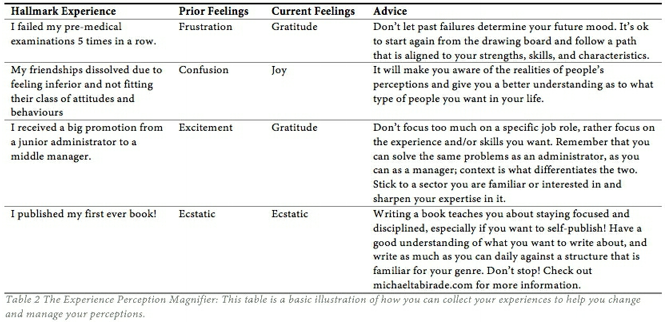
Next highlight, the key lessons learned from that experience. Once you have done this, identify what you think is the keyword, or value that popped up for you. This will highlight your values or at least standards when it comes to operating your life.
Your Natural Gifts
There are some competencies that we have obtained that appear natural to us. This may be acquired through our childhood and adolescent development, and also via natural and unnatural mentors and environments.
Identifying these natural gifts puts you in a position of strength, as they may relate to aiding your sense of purpose. Use the Johari window exercise, as an example, to identify what these natural gifts are.
Your core skills.
There are also core skills that you have intentionally developed in your adult life. This may be from qualifications you have taken, jobs that you have done, and experiences that you have had. Write out a list of these core skills, where you have got them from, and how confident you are out of 10 when it comes to these skills.
Your values.
A couple of years ago, on Instagram I was known as “Mr values”. This is because I would bang on about the importance of values in our life. I believe there is a huge misunderstanding of the gravity that values provide in our lives.
Values are deemed as the things that are most important to us. Values can be categorized as means values, ends values, and core values. We use means values to attain something, ends values as our final goal, and core values are those that align with our true self.
Being clear of your values will help you make better decisions, which in turn determine your destination, and ultimately determine your destiny. Write a list of values and answer some questions that may help you unearth them. Questions can include:
- What is really important to me?
- What do I believe?
- What don’t I believe?
- What do I really like?
- What don’t I like?
- When was I happiest?
- When was I saddest?
- What does good friendship look like?
To decide on values, try looking at the Johari window on Wikipedia. You can find a list of 50 different meta-emotions to choose from. You can also search for values list on Google.
How do you solve problems, and why do people come to you?
Finally, it would be sensible to define how you solve problems. This relates to your learning style which traditionally is broken down into the reflector, the theorist, the pragmatist and the activist.
This may also give you a clue in terms of, not only how you solve problems, but what types of problems come to you from other people. Of course, this is better known when you are aware of where you stand in relation to the previous points covered above.
You can also complete tests like the 16 Personalities or the Big 5, to help you profile your temperament. When you agree with the results or not, you can make judgements that help you workout your personality and problem-solving approach.
Now that we’ve covered this part, let’s move on to the next section.
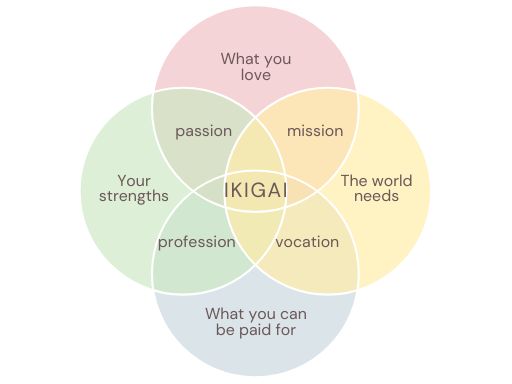
Diving deep into your interests.
We have established our sense of purpose, and we’re excited and raring to go! The aim now is to harness this sense of purpose and funnel it into organised information. This information serves as a way to build your expertise overtime. Remember, you are creating a portfolio career, and that is attached to the expertise and experiences that you want to amass.
One of the quickest ways to learn more about a specific topic is to find people who have dedicated their lives to teaching that topic. The obvious thing is to read their books and follow their articles. A fast way to know if someone has knowledge on a certain topic is by watching their long interviews or podcasts. This gives you a solid and quick idea of their expertise. You can use things like https://youtubetranscript.com/ or the Glasp Chrome extension to summarise the information.
The second thing is not to be afraid to read big hallmark books or channels that surround that topic. It’s best to go broad, and then deep with that topic, so you have a great foundation. Sometimes it may serve to read university textbooks to deepen your understanding.
Many people rely on AI and repeat information without fully understanding it. When speaking to other people about stuff that you’ve learned, it will be clear that you have done the work. It’s not about spending copious amounts of time obtaining knowledge; it’s about diving into an interest that serves your sense of purpose.

The final thing to do is to ensure that you consolidate all your knowledge and learnings in an organised way. Using technologies such as Notion will help you do this properly. Make sure things are categorised, have headings, have toggles, and other things to make the information easily legible and accessible.
You are essentially housing your knowledge, that will serve as a “knowledge framework”, helping you attract opportunities down the line.
A portfolio career is where your passions, experience, and curiosities intersect with marketplace needs. It is a unique way to develop multiple income streams and pursue multiple interests simultaneously. This is essentially leaning into your Ikigai.
Sharpening your skills.
To sum up, we did exercises to find our purpose and learned how to explore our interests. To solidify our progress, it would make sense to sharpen our skills. Applied skills are the number one way to achieve success or at least gain learnings from your execution.
One way to develop your skills is to embark on an accredited, or unaccredited programme. Deciding whether to take an accredited program depends on your goals and how your audience will view you.
For example, as a contractor, you can benefit from obtaining technical skills from accredited programs such as Agile or Prince 2, especially if you are a project manager. If you realise that you want to become a health coach, then possibly learning about nutrition from a level 5 programme may serve you well. However, there are many portfolio careers that do not require an accreditation; and in many markets they don’t actually care about the accreditations you hold. They care more about what you believe and what you know.
Furthermore, being part of these programmes can expose you to a wider audience, or people who are just like you. The associations and memberships give you a sense of community where you can dive into a niche network.
Sharing your knowledge.
We are now getting to the part that is pretty exciting, and that is sharing what you have learned. The reason we do this is that we want people to know that they can come to us for a specific set of problems. Again, the type of portfolio careerist that you are would determine how you solve these problems for them.
If you are a career traditionalist, then you solve problems within the workplace and your audience would be recruiters and hiring managers. If you are a conservative contractor, your audience is likely to be the same, and extended to more dynamic forms of work. If you are a serial non-executive director, then talking about your experience centred around leadership, risk management, and governance would be central to attracting the right types of people. These are mere examples.
The best way to share content online is via these 3 forms:
- SEO platforms
- Social media platforms

Right now, as of 26th May 2023, I personally believe the quickest way to start sharing your content is via the following platforms:
- YouTube: It allows you to form a deep relationship with your audience and be perceived as an expert. All you need is some notes surrounding a topic area(s), and a high-definition smartphone to start recording. Check my YouTube videos as an example
- LinkedIn: Condense your LinkedIn posts with insights, tips, and engaging content that draws from your YouTube videos and email newsletter. Aim to educate, inspire, entertain, and motivate your audience.
- Substack: This essentially is where you can create a community by developing newsletter articles that also serve as a blog. You can also create paid membership down the line and develop a podcast (shared on other platforms), host videos etc. You will also be able to build an email list which you own, and can export and import onto other platforms if need be.
If you want to become a professional portfolio careerist, I truly believe that these are one of the best ways to do it. Of course there are other platforms such as Instagram, TikTok and Twitter, but you have to decide what makes sense for you. Also, it can be overwhelming sharing all this information on platforms. It may be smart to start with just one platform; either one of the ones I suggested are good to start off with.
Please also note a good system will aid you in ensuring that you consistently share content. Your consistency, and high-quality content, will ensure that people start to engage with your content. This engagement will be defined by views, likes, shares, and direct messages.
Integrating your interests
We’re making some great progress when it comes to setting the right foundations for our portfolio career. It’s now time to integrate our interests into the fabric of social environments. This can be done in some of the following ways:
- Join networks and clubs inside or outside of work that satisfy your interests.
- Creates spaces inside or outside of work that satisfy your interests.
- Apply for roles that satisfy your interests:
- Jobs
- Board roles
- Volunteer roles
It’s important to remember that there are still great opportunities in speaking with real people, despite the current emphasis on online interactions. One way I got coaching clients by sharing my expertise and giving people confidence to manage their lives, improve their careers and start their own businesses. This was typically done at previous jobs or events.
The power of building a strong portfolio career is demonstrating that you are a practitioner in the game. That means you have to get stuck in with your chosen portfolio.
You can get away with being a creative knowledge distributor, however the practitioner clearly is in a different seat. Don’t just learn the game, play the game.
As you can see we are essentially building our LinkedIn in real life. Think about it: you are building your about section, your experiences, you’re volunteering, your qualifications and skills, and other things all surrounding your portfolio career.
Integrate my friends, integrate!

Boosting your Personal Brand
As a portfolio careerist it is important to develop a strong and authentic personal brand. Your brand needs to be authentic so that people can connect to you in a relatable and engaging way. However, this brand needs to also dominantly express the parts of you that align most with your target audience.
In order to develop a strong personal brand you need to have:
- Clear message
- Consistent identity
- Congruent set of content
- Credibility
Your Target audience.
Of course, as a portfolio careerist you will have potentially multiple different types of target audience. But you’ll likely have the general audience that connects with you on a regular basis. There are generally two types of audience that you need to target:
- The person who has the same demographics, psychographics, and consumerist behaviour as you did two to five years ago. They likely would have the same problems that you needed solving back then. This makes it easy when creating content, as you are writing to your younger self.
- The second demographic are essentially people representing organisations that require your professional services. These professional services are most likely for careerists involved in traditional jobs, contracting opportunities, and consulting opportunities (management consulting, speaking, organisational design, facilitation etc.).
For clarity, it may be useful to write out key things about your specific audience, and get ChatGPT to help you frame this. You can even use Google Bard, or Bing Chat to help you get live web-based statistical information on the demographics and psychographics of your audience. Think about:
- Where they live
- Their profession
- Their age group
- Their possible heritage
- Their wants and needs
- Their key problems and their desires.
Speaking engagements

As you develop a presence online, and establish the theme for your portfolio career, people will start to engage with you. This is likely to lead to speaking opportunities. Now there is a whole host of ways to create speaking opportunities. Here are some of those ways:
- YouTube: If you are choosing to go on YouTube then there is an opportunity for you to speak at least on a weekly basis. Creating a popular YouTube channel can be challenging, but it’s an excellent opportunity to showcase your speaking skills and possibly generate income down the line.
- Hosting your own events: You can also create a monthly, bi-monthly, quarterly, six-monthly or annual event inviting your target audience. This event can be entertaining, educational, or empowering by nature. It can even simply be a networking session. The point being made is, you need to be at the centre of it in some way.
- Podcasts: Occasionally, you’ll get people asking you to be on their podcast. To be proactive, you should contact people in your network or those in your line of work and ask to be a guest on their platform. Simply write a compelling message that recognises them as an invaluable member of the community, and you would like to contribute to that community as well. You would need to demonstrate value. Of course, you can use things like ChatGPT to help you formulate a message.
- Social Media Lives: Just like the YouTube videos, you can also go live on various different social media platforms. In this example, it would be LinkedIn or YouTube. This is an opportunity to directly engage with your audience and allow them to recognise first-hand your knowledge and expertise within your portfolio career field.
- Workshops or Talks: Similar to the others, this type of speaking opportunity can vary. This can be either offline or online. The key here is to establish your speaking style. Usually I produce prompts or a set of slides that help support my speaking style. To improve your skills, a great way to practice is by recording yourself using your smartphone. Afterward, review the recording, both with and without sound, to notice what to improve. This can be done by watching the video or just listening to the audio.
Apply for opportunities.
There are also opportunities to apply for projects, movements or volunteer work that will help boost your brand within a specific space. Examples of this include:
- Ambassadors
- Advisors
- Trustees
- Non-executive director’s
- Facilitation
- Coaching
- Mentoring
- Consultant
- Volunteering
Create a content machine
I have been inspired by several people such as Stefan James, Peng Joon, Gary Vee, Sunny de Lenarduzzi, Miles Beckler, Vanessa Lau, Dan Koe and Justin Welsh to create a content machine over the years. To succeed as a portfolio careerist using content to enhance your personal brand, you need a reliable way to showcase your skills and expertise effectively. A solid system will enable you to express your creativity and stand out from the crowd.
Essentially, the principles for developing a solid content machine include:
- Being clear on your sense of purpose, aspirations and goal.
- Picking your curiosities and developing an intersection of your ideas to create your portfolio niche.
- Based on the above, record topic ideas from conversations, comments from your audience, other people’s content, walks and brainstorming.
- Choose a topic idea, and develop structured bullet points around it. Use research from other sources if need be. If possible, gain inspiration from popular content of that topic to formulate a title.
- Create your newsletter blog draft using a clear structure: Introduction, Subheadings, Summary, call to action. Edit and reread for accuracy
- (Optional) If turning into a video, use the newsletter blog as a prompt script or turn it into a presentation.
- Record your video authentically in one take using these prompts, using software that enables you to share your screen. Schedule or publish the video.
- Create 2-8 lessons learned, insights, lists, dos and don’ts content for your chosen social media based on this topic, and schedule for release over time.
- Plug your newsletter 1–3 times a week via your SEO and social media-based content.
- Rinse and repeat.
This system can be setup in Notion, Google Drive or other cloud-based organisation application. The more specific and authentic you are with your workflow, the better it will be.
The key is to schedule ahead of time, and if you want, replace yourself with keys aspects with a virtual assistant down the line.
Professional Shots.

Most people get a professional shot once in their lives. Getting professional photos taken periodically can be a good idea, depending on your goals. Every 3 to 24 months may be the best frequency for your needs.
However, at a minimum you need at least one proper professional headshot that can be used for your online presence.
Connect with an established photographer who specialises in brand photos (or headshots). You can also develop an initial basic brand on Canva using their templates. We can get this done professionally, however this may stack up some costs that you’re not willing to pay. The choice is yours.
Offer Coaching & Mentoring.
This next part you do not have to do, but it is the quickest way to start making income based on your knowledge and experience. If people contact you directly or respond to your newsletter, you can offer coaching or mentoring related to your niche.
You can offer free sample coaching sessions, so people can consider if they want to invest in your services.
This can be traditional coaching, or coaching based on the logical framework developed through the knowledge you required and experiences you have obtained over time. It may be best to map it out and think about what pain are they running from, and what gain do they want to run towards.
Productizing your knowledge
If you feel confident about your ability to provide value both in person and online, you may want to consider hosting an online event. I know I mentioned online events earlier, but this online event should be recorded and should be presented using presentation slides. It is an opportunity for your target audience to visually see an expression of the genius within you. Depending on your strategy, you can decide to charge using a tiered model or flat-flee, or make the event free to a private audience.
This recorded event can then be sold to your audience via your newsletter indefinitely. It creates an income stream and enables you to solidify your personal brands within your unique portfolio career.
You may even decide to develop a book, or series of books. It can simply be done using self-publishing services such as Amazon’s KDP, or for serious hustlers, signing with a book publisher. Whatever you decide, the possibilities are plenty.
To sell your recorded event as a video, you can create a Stripe account and use their payment gateway. You can host the video on YouTube. It’s easy to set up and start selling. It can also be a video file saved on Dropbox, or you can use something like Gumroad to sell your offer.
The key takeaways are:
- Developing a sense of purpose gives you drive and meaning in your portfolio pursuits.
- Diving deep into your interests sparks the need to develop your awareness, knowledge and skills within your chosen portfolio career.
- Sharpening your skills gives you that edge to become a practitioner and recognised expert within a given field.
- Sharing your knowledge cements the idea that you are the person to go to for specific services.
- Integrating your interests socialises what you know and what you do to a more human audience.
- Boosting your Personal Brand creates a magnetic aura that helps to accelerate your progress.
- Productizing your knowledge gives you the opportunity to create some serious money from your chosen portfolio career path.
In summary.
To conclude, building a solid, purposeful, portfolio career starts with you. As long as you have an idea of what you want (or at least kind of want), that is enough to get started. Being curious, learning new things, organizing and sharing information, and integrating it into your social experience can help you advance in your portfolio career. When sprinkled with an attractive and magnetic brand, that is authentic by nature, you are able to attract more people into your portfolio whirlpool. If you want, you can make money whilst doing all of this.
Good luck with your portfolio career progression. And remember, don’t pursue a portfolio career; create one.
If you want I can help you in the following 3 ways:
- The Life Navigation System: A comprehensive guide on how to manage your life, helping you set goals, set routines and journal like a boss! Comes with a complete walkthrough video and Notion template!
- Secure the Job: The step-by-step course that unveils systems, strategies and success when it comes to progressing your job and applying for new roles
- The Independent Consultant UK: A guide to becoming a contractor in the UK. This is a step-by-step walkthrough of my experiences, hosting exclusive information to help you transition into the space of contracting.
- Book a call: Let’s have a chat to focus on your life areas and where you can have the biggest impact. If it makes sense, we can progress towards procuring coaching or mentoring.
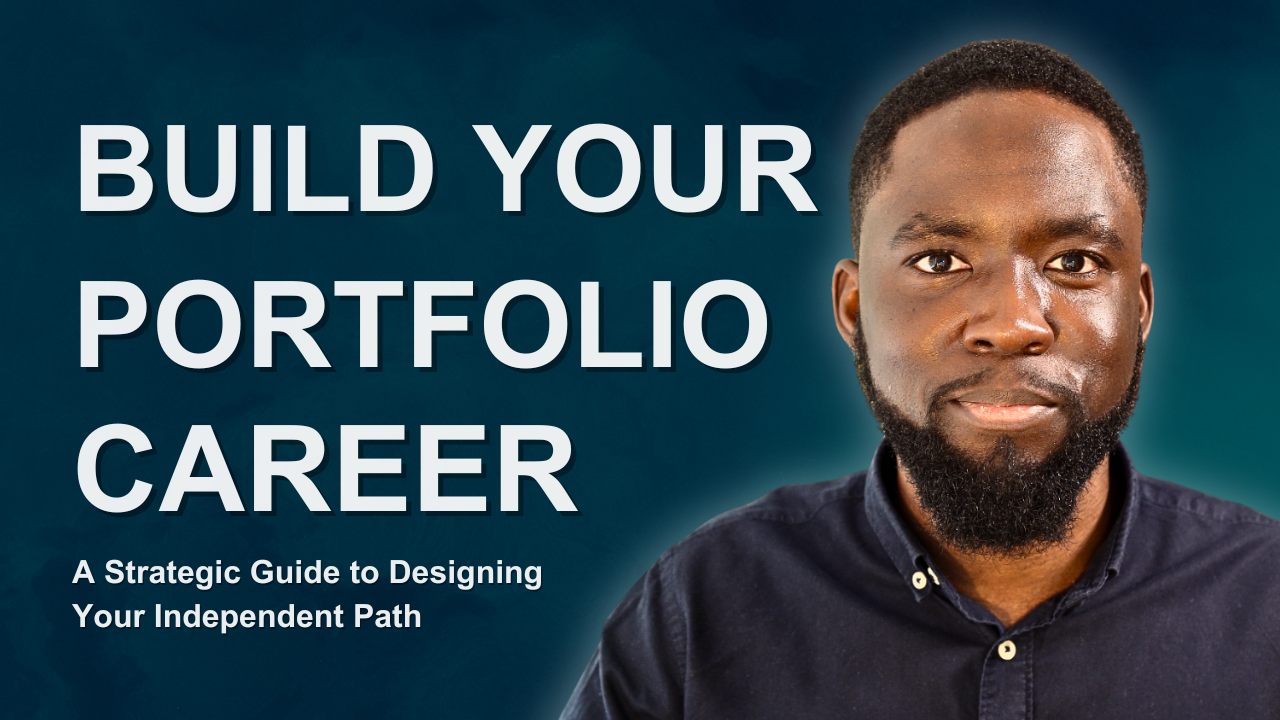


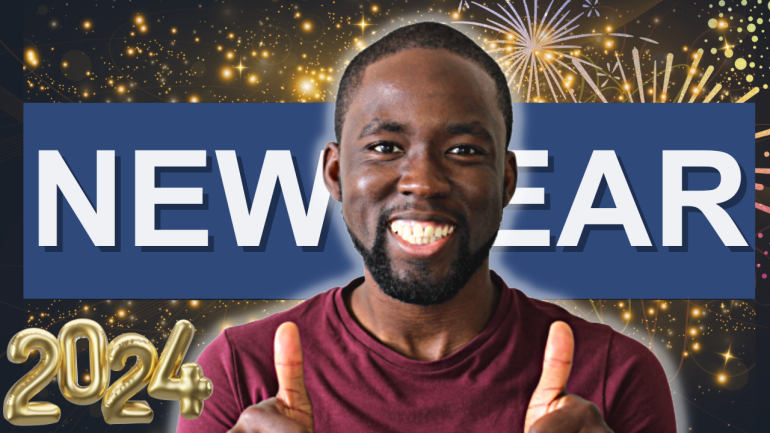

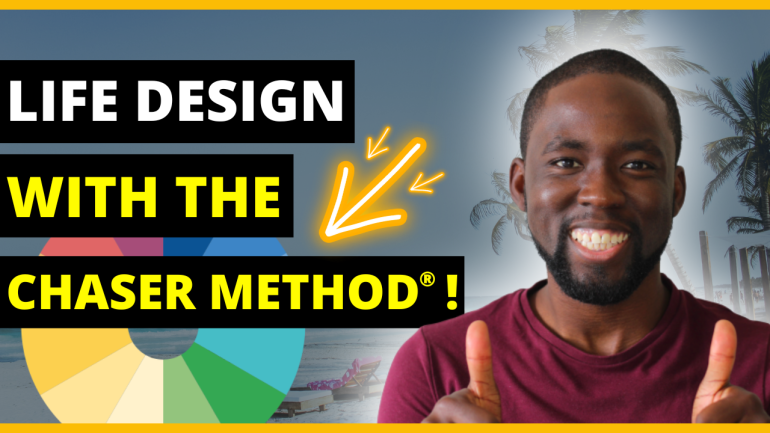


One Comment
Comments are closed.